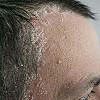Benefits of moderate sun exposure
Dr. Robert S. Stern, chair of the Department of Dermatology at Harvard-affiliated Beth Israel Deaconess Medical Center , calls them "solar-phobes": people so concerned about getting skin cancer that they stay inside or cover every bit of skin. "They cover up like they were going out into the Arabian Desert ," he says. The marketing of ultrablocking sunscreens and special sun-protective clothing plays into these fears.
There's no getting around the fact that sunlight is hard on your skin. Age gets blamed for wrinkles and rough, dry skin. But the real culprit is a combination of age and sun that dermatologists call photoaging. The short UVB wavelengths that cause sunburn can also damage DNA and suppress the skin's immune system. The longer, more penetrating UVA wavelengths may create highly reactive oxygen molecules capable of damaging skin cell membranes and the DNA inside.
The relationship between sun exposure and skin cancer risk isn't as straightforward as you might think. Genes are a factor, of course: Some protect, some promote. So is skin type: People with pale skin who sunburn easily and don't tan are more likely to get sun-related skin cancer. As for exposure, the "dose" and its timing are crucial. Several studies have suggested that suddenly getting a lot of sun is more dangerous then steady exposure over time.
There's also evidence that exposure when you're young — perhaps before your 20th birthday — matters most. A large Scandinavian study of melanoma risk published in the Journal of the National Cancer Institute in 2003 found that adolescence is the most dangerous time to get a sunburn. Recent sun exposure doesn't seem to be associated with basal cell carcinoma, the mildest form of skin cancer. Squamous cell carcinoma appears to be different. Cumulative and recent exposure to sunlight at any age is strongly associated with actinic keratoses, scaly growths on the skin that are a risk factor for that type of skin cancer.
The same DNA-damaging, sunburn-causing UVB wavelengths that sunscreens are designed to block also do some good: They kick off the chemical and metabolic chain reaction that produces vitamin D. Research shows that many people have low vitamin D levels. There is a well-documented relationship between low vitamin D levels and poor bone health. Now links have been made to everything from multiple sclerosis to prostate cancer. "Linking" low vitamin D with these diseases doesn't prove cause-and-effect, but it suggests that possibility. Getting some sun may also shake off the wintertime blues: Research suggests that light hitting your skin, not just your eyes, helps reverse seasonal affective disorder (SAD). Moreover, being outside gets us golfing, gardening, and engaging in other types of physical activity.
Nobody wants to get skin cancer, but we've gone from sun worship to sun dread. Dr. Stern and others say there is a middle way that includes using a sunscreen with a sun protection factor (SPF) of at least 15 when you're outside for an extended period and wearing a hat and shirt around midday. So when summer's here, get outside and enjoy it!
June 2004 Update
Disclaimer:
As a service to our readers, Harvard Health Publishing provides access to our library of archived content. Please note the date of last review or update on all articles.
No content on this site, regardless of date, should ever be used as a substitute for direct medical advice from your doctor or other qualified clinician.















